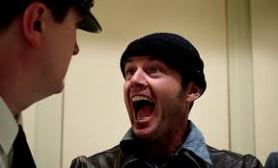As we all know, next year the biggest event in the world football calendar is taking place in Brazil. As hosts and arguably the most successful international outfit of all time, the nation of Brazil are expecting huge things from their talented side. Fans will be anticipating dazzling football full of flair and excitement, recalling memories of Pele and co of 1970, and their sixth trophy to go with it.
However, the fast-growing number of decorated Brazilian internationals returning to the Brasileiro Serie A heeds plenty of warning signs along the way. Celebrated Brazilian internationals returning home has been commonplace since samba stars started to move to the more competitive European leagues in the late 1980s, but that was in the twilight of their careers, somewhere to wind down when the legs are feeling the strain.
But in the past two transfer windows, we’ve seen respected Brazilian internationals in the prime of their careers orbiting back home. This has a strong correlation with the fact Brazil’s economy is undergoing a ‘boom’ and in turn Brazilian football clubs can afford to pay the homesick stars their sizeable wages, not particularly related to any increase in standard of play in the country’s top division.
Furthermore, young ‘wonderkids’ that used to depart for European giants as early as 16 or 17 years old are staying in their homeland for longer. Some argue this stunts their potential by not going to Europe to develop their game tactically. It is an interesting debate, especially when Brazil’s beacon of hope for the future is 21-year-old forward Neymar. Having come of age after amassing well over 100 appearances and 50 goals for Santos, perhaps now is the time for his move to a giant in the European game to play in the coveted UEFA Champions League, like all the Brazilian greats before him. Moreover, with emerging talents like strapping centre-half Dede and box-to-box playmaker Paulinho, both 24, still not making the leap across continents there is certainly a pattern forming.
So now we see the potential negatives of this sudden regrouping of Brazil’s best talent. The surprise sacking of former Selecao boss Mano Menezes has been the first casualty, with the federation going towards the tried and tested with the re-appointment of 2002 winning coach Luiz Felipe Scolari. Recently we’ve seen samba stars like Ronaldinho, Luis Fabiano, Adriano, Alexandre Pato and many more sign for their favourite Brazilian sides in the so-called prime of their careers. Will this have an adverse affect on their sharpness, match fitness and tactical quality when the big guns arrive in June 2014?
The patriots and those who cling on to the era of the Brazilian domestic league being host to the best of Pele, Zico and Garrincha will say that the Brazilian league is looking to make a ‘comeback’ on the global stage. But with Carlos Tevez and David Beckham being two of a number of non-Brazilian players to turn down the offer of playing there on a good wage, the signs aren’t good.
But times have changed and still are changing very much in Brazilian football, and who knows, we might even see a performance reminiscent of the samba stars of 1970 when the calendar strikes June 12 2014.









